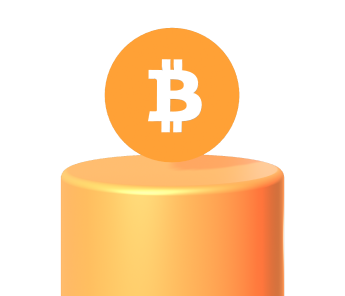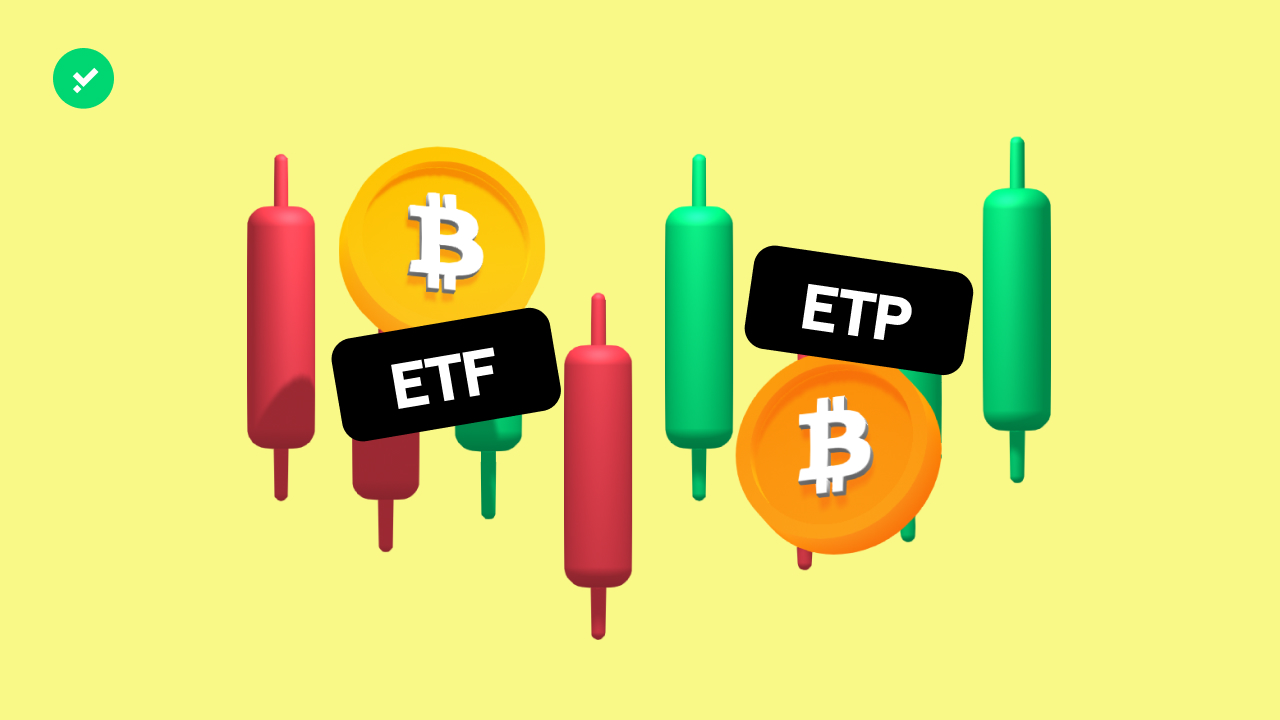Bitcoin ETFs and ETPs are becoming increasingly popular. But what are these financial instruments in short? What are their differences?
Before we look at what a Bitcoin ETF is and the difference with an ETP, let’s understand what a classic ETF or Exchange Traded Fund is. In short, it’s a financial product that closely replicates the performance of an index (called a benchmark); they are ‘packages’ containing stocks, bonds, commodities, real estate securities or derivative contracts of these instruments, in order to replicate their performance. ETFs are sold and bought like ordinary securities and are therefore considered more accessible and less expensive financial instruments than classic investment funds. Like all instruments listed on financial markets, their price can go down as well as up. In short, they can be considered as baskets of securities of different companies or entities that refer to a common ‘theme’, which can be the market of a geographical area or a sector.
What is a Bitcoin ETF
According to this definition of ETFs, Bitcoin’s Exchange Traded Funds replicate the performance of BTC and assets related to Satoshi Nakamoto‘s crypto. In essence, they allow exposure to BTC without actually buying any cryptocurrency, which is why in most cases they appeal to those not used to dealing with cryptocurrency exchanges, wallets and private keys.
On 8 June 2022, the first Bitcoin ETF was listed on the Italian stock exchange. While the first one ever, made by ProShares, was approved in 2021 by the SEC in the US. The launch in the US was quite successful for both retail and institutional investors.
At the moment, all Bitcoin Exchange Traded Funds are based on futures, i.e. forward contracts that allocate a certain amount of the underlying asset, based on a predetermined delivery price and maturity, to the two parties that subscribe to them. In this system, one of the parties ‘bets’ on the price going up and the other on the price going down.
Are there any spot Bitcoin ETFs?
Spot Bitcoin ETFs are traded for immediate delivery: the order to buy or sell is immediately followed by the actual exchange of the asset for cash (as fiat currency). This kind of fund has not yet been put on the market, currently the company Grayscale is carrying out negotiations with the SEC to approve one, converting a mutual fund it already manages. Spot Exchange Traded Funds are more difficult to set up, and in order to issue them one has to meet a number of technical and regulatory requirements, especially with regard to the underlying asset, which in this case is the entire Bitcoin spot market. Any company issuing an ETF on the spot market will in fact have to own the bitcoins directly and hold them securely. In addition, it must be demonstrated to regulators that Exchange Traded Funds do not give rise to price manipulation in the relevant market.
Advantages and disadvantages of a Bitcoin ETF
As anticipated, the main advantage of these funds is that they allow anyone to enter the cryptocurrency market in a ‘traditional’ manner. In fact, they are easy for those who already operate with financial intermediaries. ETFs of this type are regulated instruments and therefore instil confidence in institutional investors (and retailers) and are used to diversify their investments.
As for the disadvantages, due to management costs, buying them is less convenient than buying BTC directly on exchanges. Moreover, derivative-based ones do not reflect price changes instantaneously, so they may not accurately track market trends. You should also consider that exchange-traded funds are indirectly managed, which means that you do not have direct control over your money. This is why they are considered by many in the industry as a method used by central banks and classical finance to somehow influence the evolution and development of a currency that was designed and created to be totally decentralised.
The difference between ETFs and ETPs
Have you also heard of ETPs? Exchange traded products are a macro-category that brings together a number of financial products that replicate stock indices or other assets by following their performance in the reference market. ETFs are thus a subset of ETPs, along with ETNs (Exchange Traded Notes) and ETCs (Exchange Traded Commodities). In a nutshell, ETNs and ETCs are not funds but debt notes, since by purchasing them one is in fact providing credit to a company. Furthermore, ETCs specifically track the price of physical commodities such as gold, silver, oil, sugar, or commodity derivatives. ETNs, on the other hand, reflect the performance of all other types of financial instruments.
A new Bitcoin ETP on the Frankfurt Stock Exchange
On 23 September 2022, a new Bitcoin-themed Exchange Traded Product was listed on the Frankfurt Stock Exchange. The ETP, which by definition consists of ETFs and ETNs, is issued by Valour, a company that offers financial products related to the Web3 sector, and is called ‘Bitcoin Carbon Neutral’. What is the special feature of this ETP? When you buy Valour’s BTC Carbon Neutral ETP, all carbon dioxide emissions related to the product will be automatically offset. These emissions include, for example, those due to mining consumption.
Concretely, the carbon-free plan will be implemented in cooperation with Patch, a platform offering solutions for companies that want to play their part in combating climate change. Patch at this juncture will select projects that prevent emissions and remove carbon dioxide related to BTC from the atmosphere. Valour also offers ETPs on Uniswap (UNI), Cardano (ADA), Solana (SOL) and many other crypto projects.
Another recently launched BTC-themed product is the 21 Shares Bitcoin ETP listed on July 2022.
Bitcoin ETFs and ETPs are thus proving to be increasingly popular financial instruments, chosen by those who want to approach cryptocurrencies in a gradual way.



